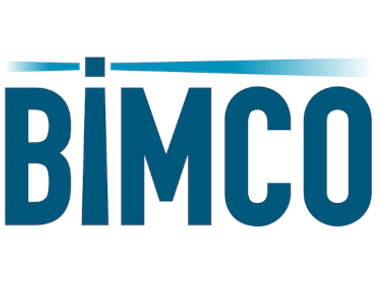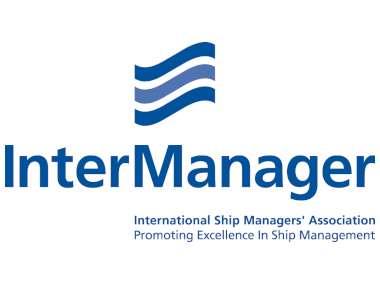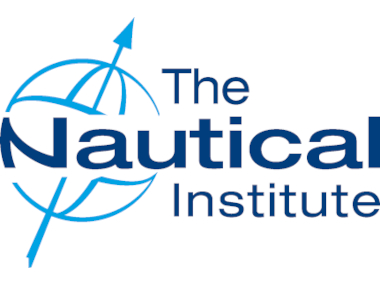Foreword
Aim
The Human Element Industry Group (HEIG) is established to focus on the importance of the Human Element and enhance existing coordination and cooperation in engagement with the issues at the IMO. A greater understanding of the human element will ensure that it is adequately and appropriately considered and addressed in all aspects of future work of the IMO.
Membership
This group is an industry group initially comprising Non-Governmental Organisations (NGOs) accredited to IMO which have interests in the Human Element. Further expansion of the group will be encouraged as activities commence. Membership may be extended to Flag states in order to further the work of the group.
Terms of Reference
To promote consideration of the Human Element within the IMO, and in particular:
- Promote consideration of the wider scope of the Human Element as reflected in IMO Resolution A974 (23) “Human Element Vision, Principles and Goals for the Organization”
- Encourage appropriate use of the standing agenda item on the “Human Element” at HTW
- Promote understanding of the Human Element through training and education
- Promote understanding of fatigue and the factors that influence fatigue
- Consider the Human Element in the context of increasing levels of automation of ship systems, equipment and operations
These guidelines are prepared and endorsed by the following organizations:
Preamble
In today’s fast-paced world, technology has brought us closer together, allowing us to communicate with each other more efficiently and effectively. This is especially true in the maritime industry, where advancements in communication systems have greatly improved ship-to-shore and ship-to-ship communication and the use of devices such as mobile phones and other personal electronic devices have increased. In general, communication systems and shipboard internet has improved the wellbeing of seafarers as it keeps them connected with their families and loved ones. However, with these advancements come certain risks, one of which is the risk of distraction at work.
Before proceeding further, it is important to establish that it is not the intention of to limit how crew members on ships use internet during their off-duty hours and personal or recreational spaces. In fact, the use of internet and other communications systems is encouraged when not working, to promote the welfare of our seafarers.
This document presents a set of voluntary guidelines developed by some of the members of Human Element Industry Group (HEIG) and is aimed at shipping companies to help them understand the risks associated with distraction at work and to assist them in putting safeguards in place to mitigate these risks. The guidelines are intended to provide an understanding of the hazards, the risks associated with these hazards, and the means to identify and mitigate such risks. Distraction at work is a major cause of decreased productivity and can lead to dangerous and fatal accidents. For example:
- The collision of the UK-registered cargo ship Scot Carrier with the Danish barge Karin Høj1 in Swedish waters on 13 Dec 2021, resulting in the capsize of Karin Høj and deaths of its two crew members
- The collision between bulk carrier Bunun Queen and offshore supply vessel Thunder2 on 23 July 2022, where the Thunder sustained substantial damage to its port side, which resulted in the flooding of one of its propulsion rooms and three other spaces
- The grounding of container ship Ever Forward3 on 13 March 2022 on the US East Coast
- The collision of the USCG vessel CG 25889 with the small passenger vessel Thriller 094 on 5 December 2009 in Charleston, South Carolina
- The collision of the tug M/V Caribbean Sea with an anchored passenger vessel DUKW34 on 7 July 2010 in the Delaware River which resulted in two fatalities and 25 injuries.
All of these incidents had distraction and distraction causing devices a role to play in their fates.
These accidents highlight the importance of managing distraction on board ships to ensure the safety of the crew, the ship and its cargo.
Management of distraction
The management of distraction should be handled on board a ship like any other safety risk.
This process may include:
- Understanding the hazard
- Assessing if the hazard can evolve into risks
- Identification of potential risk and the impact it could have on the safe operation of the ship
- Assessing available risk/hazard control options
- Choosing the most appropriate option
- Implementation of the chosen risk/hazard control option.
a. Understanding the hazard: Distraction could be caused by:
i. Key personnel using a Distraction Causing Device (DCD):
Key personnel are those members of the crew, who are directly involved in or responsible for safety critical operation. This includes a Master while conning a ship, navigating officer while on his bridge watch, an engineer while performing an engine room watch or a critical manoeuvre, duty officer/ rating while supervising a cargo operation or an engineer or able-bodied seaman while performing a bunker watch or a watchman posted as a standby person on deck during enclosed space entry operation etc. The list is not exhaustive. Examples of the use of DCD could be:
- Reading or sending a text message
- Using a mobile phone or prioritizing answering a call at an inopportune time
- Engaging with social media or viewing other media, or using a navigation system, eating etc …
- Indulging in other non-time constrained important work-related task such as chart corrections while carrying out a critical navigation or collision avoidance task
- Indulging in non-work-related tasks while carrying out an important task at hand.
When key-personnel use a DCD, it can immediately impact their situational awareness together with their ability to take proper decisions and corrective action. At times, this can lead to incidents or accidents, if not intervened well in time.
ii. Non-key personnel using a DCD at workplace:
Distraction can also be caused by non-key personnel at workspaces. Examples include ships’ personnel making personal phone calls from the bridge5, distracts the officer on watch (OOW) or using the ship’s VHF (very high frequency) radio to make social calls to other ships. This not only distracts the OOW, but also inhibits the OOW from listening to important calls from VHF from other ships or shore stations..
Lately, the practice of using cameras and smart phones to shoot videos, which are later uploaded on social media to gain publicity/followers etc, has increased. Examples include filming on the bridge while the ship is in a high traffic density area, or in a cargo control room while loading or discharging cargo or climbing a mast or other unsafe place to make the shot.
These practices can lead to the key personnel getting distracted from their primary task of navigation or cargo work or other watchkeeping activities.
iii. Excessive use of business DCD by key-personnel
Excessive use of business or work-related devices or other activities may distract crew members from their primary duties. Such use can also become a safety hazard for those performing critical tasks on board a ship, such as:
A navigational watch keeping officer can get distracted from his or her primary function by:
- Checking business emails from bridge
- Making or attending business phone calls from the bridge. At times, receiving numerous calls from various parties whilst approaching a harbour can be daunting task, and easily distract the navigator from the primary duty of navigation and collision avoidance.
- Filling port papers or performing other administrative task from the bridge computer
- Monitoring ballast water operations from the bridge control panel, if present
- Keeping track of personnel working on deck, including those engaged in hazardous activities such as entering enclosed spaces, working over the side, or working aloft etc; while these can be considered normal duties whilst sailing in mid seas, it can cause a distraction whilst transiting through busy coastal waters where undivided attention is needed on navigation and collision avoidance.
- An engineer on duty can get distracted by completing excessive amount of checklists while performing a critical manoeuvre.
- In port - while it is normal for the duty officer to carry the business telephone and attend to phone calls from agents etc, it can at times become overwhelming with the result that focus is lost on cargo operation, especially if multiple tasks are performed concurrently such as bunkering, provisions, inspections or maintenance.
b. Assessing if the hazards can evolve into risks
An organisation should benchmark where it stands in terms of management of distraction to determine the nature and level of the hazard and assess how to appropriately control the risk represented by the hazard.
Among other factors to be taken into account in this exercise:
i. The propensity of the crew to carry mobile phones (or other DCD) while they are on duty?
ii. How is the communication set-up on board?
- How many phones are available for use of crew members to make social calls and where are these phones located?
- Is there a wi-fi setup on board?
- Can internet be accessed only through certain wired devices on board?
- Can the wi-fi be accessed from the key work locations such as the navigational bridge, engine room, cargo control room etc?
iii. Does the shipboard internet give access to viewing videos, playing games online etc. or it is restricted to messaging, internet browsing etc?
iv. Are there any restrictions on internet access, for example to prevent access to videos, games or social in work locations or as a function of the maximum time online?
v. Are there any time restrictions on availability of internet, such as only during day time or only during certain number of hours of a day?
vi. Are there time restrictions on use of internet – number of hours or minutes a crew member can use the internet?
vii. Is there a restriction on the use of amount of data used per crew member?
viii. Do crew members have to pay for using internet on board ships?
ix. Can business telephones be only attended from the bridge? Can these be routed to other places?
x. How is the policy of business phone usage in port. Is there excess reliance on the officer on watch to carry out non-cargo related duties along with cargo watchkeeping?
xi. What is the policy of key personnel’s use of on-board computer? Are all the checklists only available on the computer?
xii. Where is the bridge computer placed? Can the OOW maintain a look-out while using DCD for business purposes? (Locating IT systems are at a place from where an OOW can maintain a look out may seem logical but can introduce a false sense of security with the OOW spending longer time on the computer than required, practice that gets worse with time and eventually can lead to getting engrossed in the work on the computer and neglecting the look-out duties.)
xiii. Is the OOW required to perform administrative duties during watch keeping hours?
xiv. What is the policy of non-key personnel using DCDs from key work locations? Are there set procedures in this regard?
c. Identification of risk and the impact it can have on safe operations of the ship
The organisation should carry out an evaluation of the existing hazards posed by DCDs. Assessing whether these hazards can result in risk of accidents, is a good starting point.
This may not be an easy exercise. However, running through scenarios from previous accidents or incidents may give a general idea on what kind of consequences the company may need to face.
For example, a ship with a distracted navigator may end up in a collision or grounding incident with multiples fatalities. A distracted engineer’s failure to attend to an alarm could cause extra maintenance work on a particular machinery. Also, use of DCDs during bunkering can lead to pollution incidents resulting in costly environmental damage.
Conversely, not replying to business emails or attending phone calls may have a detrimental effect on the conduct of business, especially if there are no deputies to carry out the job. A balance needs to be struck, therefore, in establishing DCD policy.
Should an accident does occur, the cost and consequences, in terms of injury, ship damage, cargo damages or pollution incidences can be extreme Recent court cases have highlighted accidents may not be categorised as neglect of crew members, if the company failed to look into obvious risks and did not place necessary safeguards in protecting the ship against such risks. This is why it is critically important to establish safeguards and implement them in the safety management system.
Internet connectivity is increasing at sea, and more and more shipping companies are providing access to internet to their shipboard staff.
The non-availability of internet access on board may not be an option anymore, especially since the introduction of legislation mandating the need for it. MLC code A.3.1 states – “17. Appropriate seafarers’ recreational facilities, amenities and services, including social connectivity, as adapted to meet the special needs of seafarers who must live and work on ships, shall be provided on board for the benefit of all seafarers, taking into account Regulation 4.3 and the associated Code provisions on health and safety protection and accident prevention.”
However, this does not necessarily mean that internet access should be available throughout the ship with no restrictions whatsoever.
COLREGS Rule 5 – Lookout – states – “Every vessel shall at all times, maintain a proper lookout by sight, hearing and by all available means, appropriate to the prevailing circumstances and conditions, in order to make a full appraisal of the situation.”
When the navigational bridge watchkeeping team is distracted in any way, this Rule is breached. Therefore, if a company allows the use of DCD by the watchkeepers on the bridge, there is a potential breach of this important COLREG regulation. This also means that proper and effective safeguards are not in place as required by ISM Code. It is therefore very important to keep distractions away from the bridge team on duty.
While it may seem that this rule does not apply to other areas on the ship, it can be argued that the requirement of placing effective safeguards against existing risks may not be fulfilled when DCDs are used at workplaces.
d. Available risk control options
Below is a non-exhaustive list of risk control options that may be used to place effective safeguards. Companies may use their own due-diligence techniques to put additional safeguards in place as the case may require.
i. Restricting/Prohibiting the use of personal DCD by key personnel in key working spaces such as bridge, engine control room, cargo control rooms, officer on watch (bridge), engineer on watch (EOW), other watch keepers such as gangway watch etc
ii. Restricting the use of personal DCD during working hours, irrespective of the place
iii. Restricting the use of DCDs by non-key personnel at key working spaces. This can limit the distraction caused to key personnel.
iv. Limiting the use of business DCDs during working hours and from working spaces
v. Looking into the onboard communication systems set-up and optimising it for crew members in order to limit distraction
vi. Strategically placing computers in key working spaces to ensure that working with these devices is kept within a safe limit.
e. Choosing the most appropriate risk control option
Depending on the outcome of the risk analysis, a company may choose one or more risk control options. This comes with another analysis of cost versus benefit, and it can vary from one company to another. When analysing the benefits, it is also important to address the insurance aspect. With proper procedures in place, companies can reduce liability in case of accidents6.
f. Implementation of the chosen risk/hazard control option
It is not only important to have a company policy on managing distractions, but also equally important to actively implement and enforce it.
Therefore, once the risk appropriate risk control options are chosen, it is important to include these in the safety management system and add them to the safeguards of safe operation and pollution prevention.
g. Verification of effective implementation
ISM has a time-tested verification procedure, which can be used to ensure an effective implementation. Including these safeguards or procedures in SMS also means that these are effectively audited, and non-conformances addressed by appropriate corrective actions.
Conclusion
Distraction caused by mobile phones and other DCDs can pose a significant risk to maritime safety.
This document has highlighted the dangers of distraction, outlining how divided attention can compromise situational awareness and potentially lead to accidents. Examples from land-based industries showcase the effectiveness of strict regulations and suggest the need for similar measures in the maritime sector
Moving forward, shipping companies may consider implementing robust policies and procedures to manage the use DCDs on board ships.
These policies could define acceptable and unacceptable uses of DCDs, particularly in critical operational situations. Effective implementation may require crew training and awareness programs, fostering a culture of safety that prioritises focused attention during critical tasks.
By acknowledging the potential risks associated with DCDs and considering appropriate controls, shipping companies can contribute to a safer work environment for seafarers and ultimately improve overall maritime safety.
1 Scot Carrier and Karin Høj report published
2 Collision between Bulk Carrier Bunun Queen and Offshore Supply Vessel Thunder
3 Marine Casualty Reports of Investigation, Reports of Marine Boards, and Other Marine Safety Reports and Studies
4 More on Cell Phone Use in the Maritime Industry
5 Bridge of the ship is considered the best place to receive phone signals, hence a popular place on board to make phone calls by ship's staff.
6 CMA CGM LIBRA: Passage plan, seaworthiness, Supreme Court rules




